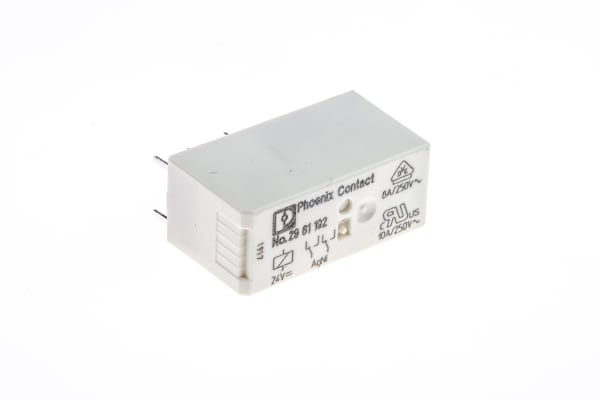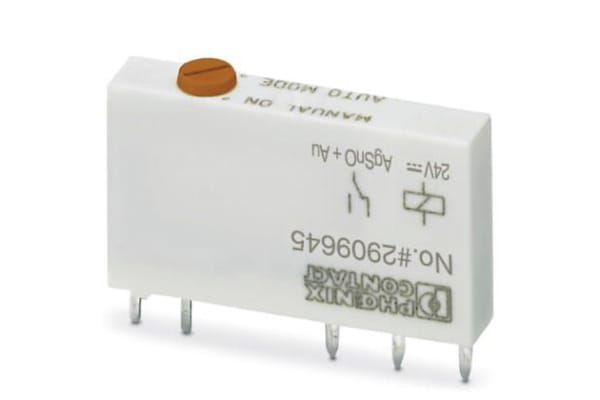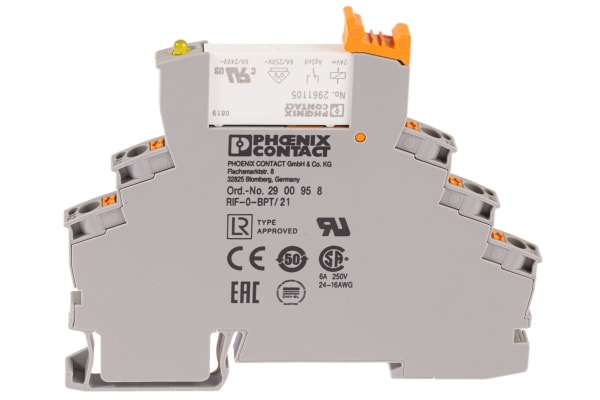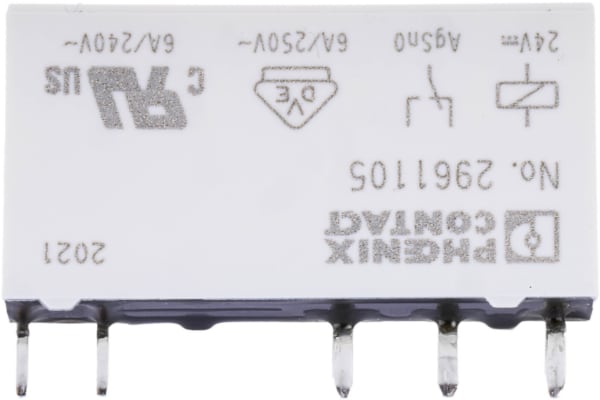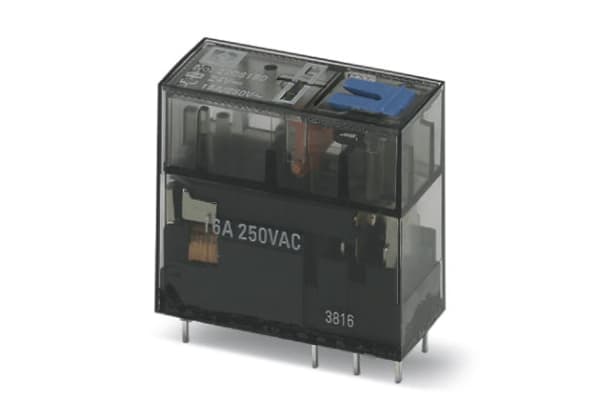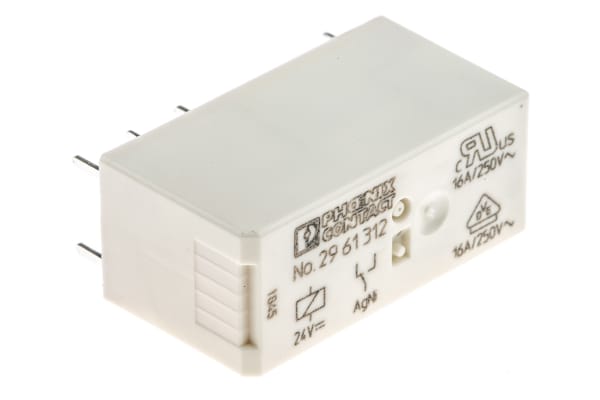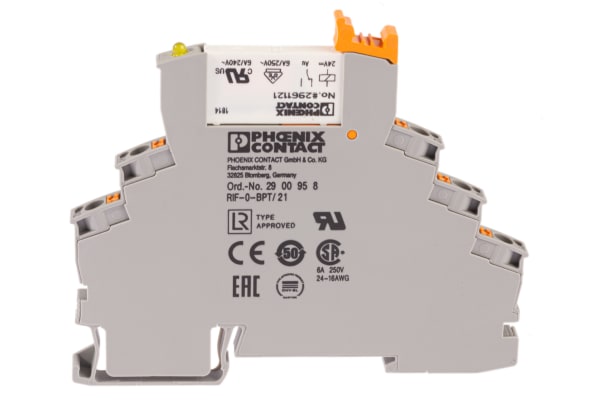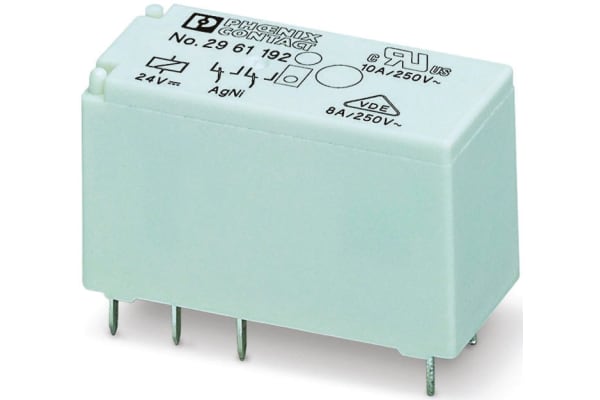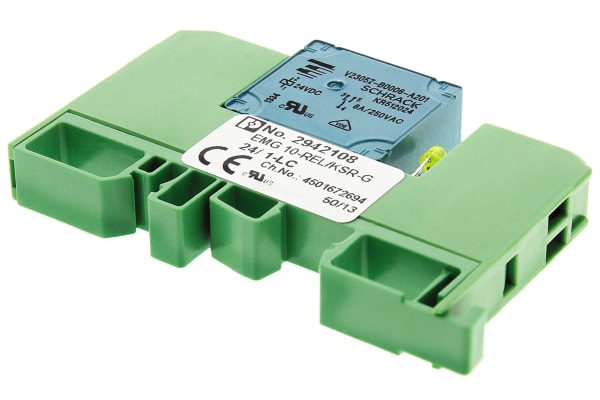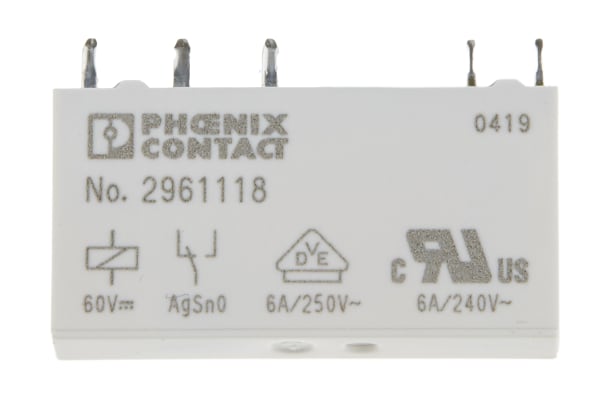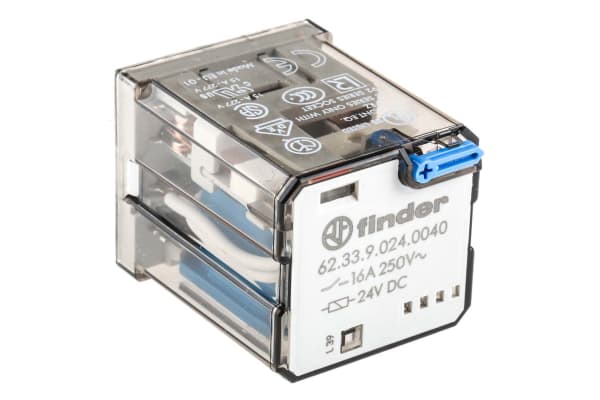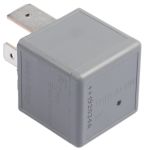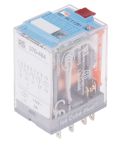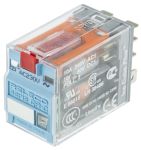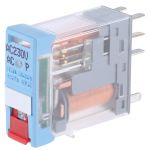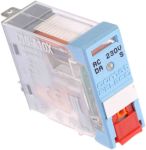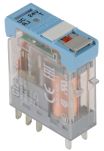Non-Latching Relays
Relays are electrical switches that are operated by electrical impulses with the primary function to open and close a circuit, they can also be referred to as industrial switches. There are 2 main types available, latching and non–latching relays.How do non-latching relays work?Non-latching relays are in a normally closed (NC) position and will stay in this state without power. When power passes through the circuit, the relay switched to a normally open (NO) position by using an internal coil to generate a magnetic force, holding this NO position. Once the current is turned off, it returns to the NC position. This makes non-latching relays well suited to push-button applications like keyboards and micro-controller input buttons.What are non-latching relays used for?Non-latching relays are highly durable and versatile components, making their performance long lasting and suitable for use in a wide range of applications, such as:Automotive enginesHousehold appliancesIndustrial machineryMedical equipmentTelecommunications equipmentWhat is the difference between latching and non-latching relays?Both types of relays in similar in design and function, however, a significant difference between them is that a latching relay will remain in the last position it when it was last powered, whereas a non-latching goes back to its normal position. This makes each more type of relay suitable for different applications. Considerations when selecting a relayWhen choosing a relay, it is important to consider a number of specifications to ensure it is fit for purpose, some factors include:Coil voltage – the required voltage to actuate the switching mechanism. If a voltage is too high this could damage the components, if it is too low then it will not actuate. Contact configuration – This is the state the contacts are in without power. For example SPST, single pole single throw.Contact material – the relay contacts are available in many materials that have certain properties. Common materials are gold, silver, tin oxide and nickel Coil power – the amount of power (watts) the coil operates at. This must match the power in the circuit for correct function. Coil resistance – the amount of resistance (ohms) in the circuit that the coil creates.
-
Phoenix Contact, 24V dc Coil Non-Latching Relay DPDT, 8A Switching Current PCB Mount, 2 Pole, 2961192
IDR152,824.73 -
Phoenix Contact, 24V dc Coil Non-Latching Relay SPDT DIN Rail Single Pole, 2942153
IDR1,113,407.35 -
Phoenix Contact, 24V dc Coil Non-Latching Relay SPDT PCB Mount Single Pole, 2909645
IDR286,244.81 -
Phoenix Contact, 24V dc Coil Non-Latching Relay SPDT, 10mA Switching Current DIN Rail Single Pole, 2903370
IDR212,821.81 -
Phoenix Contact, 24V dc Coil Non-Latching Relay SPDT, 10mA Switching Current PCB Mount Single Pole, 2961105
IDR271,035.76 -
Phoenix Contact, 24V dc Coil Non-Latching Relay SPDT, 10mA Switching Current Single Pole, 2908180
IDR93,561.88 -
Phoenix Contact, 24V dc Coil Non-Latching Relay SPDT, 16A Switching Current PCB Mount Single Pole, 2961312
IDR133,000.52 -
Phoenix Contact, 24V dc Coil Non-Latching Relay SPDT, 1mA Switching Current DIN Rail Single Pole, 2903368
IDR223,310.81 -
Phoenix Contact, 24V dc Coil Non-Latching Relay SPDT, 1mA Switching Current PCB Mount Single Pole, 2961121
IDR295,475.13 -
Phoenix Contact, 24V dc Coil Non-Latching Relay SPDT, 50mA Switching Current PCB Mount Single Pole, 2961545
IDR113,595.87 -
Phoenix Contact, 24V dc Coil Non-Latching Relay SPNO DIN Rail Single Pole, 2942108
IDR804,611.19 -
Phoenix Contact, 24V dc Coil Non-Latching Relay SPNO, 6A Switching Current DIN Rail Single Pole, 2903361
IDR174,222.29 -
Phoenix Contact, 60V dc Coil Non-Latching Relay SPDT PCB Mount Single Pole, 2961118
IDR347,395.68 -
RELAY 6233 24V 3RT
IDR295,160.46 -
RELAY POWER 70A 24VDC PLUG-IN
IDR360,402.04 -
Releco, 115V ac Coil Non-Latching Relay 3PDT, 10A Switching Current Plug In, 3 Pole, C3-A30X / AC 115 V
IDR384,736.52 -
Releco, 115V ac Coil Non-Latching Relay 4PDT, 5A Switching Current Plug In, 4 Pole, C9-A41X / AC 115 V
IDR158,069.23 -
Releco, 115V ac Coil Non-Latching Relay DPDT, 10A Switching Current Plug In, 2 Pole, C7-A20X / AC 115 V
IDR269,357.52 -
Releco, 230V ac Coil Non-Latching Relay 3PDT Plug In, 3 Pole, C3-A30X-230VAC
IDR409,700.34 -
Releco, 230V ac Coil Non-Latching Relay 4PDT, 5A Switching Current Plug In, 4 Pole, C9-A41X / AC 230 V
IDR437,391.30 -
Releco, 230V ac Coil Non-Latching Relay DPDT, 10A Switching Current Plug In, 2 Pole, C7-A20X / AC 230 V
IDR294,426.23 -
Releco, 230V ac Coil Non-Latching Relay DPDT, 5A Switching Current PCB Mount, 2 Pole, C12A21X230A
IDR391,029.92 -
Releco, 230V ac Coil Non-Latching Relay SPDT, 10A Switching Current PCB Mount Single Pole, C10-A10X / AC 230 V
IDR262,225.00 -
Releco, 24V ac/dc Coil Non-Latching Relay DPDT, 5A Switching Current PCB Mount, 2 Pole, C12A21BX24AD
IDR252,889.79



